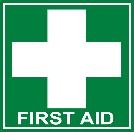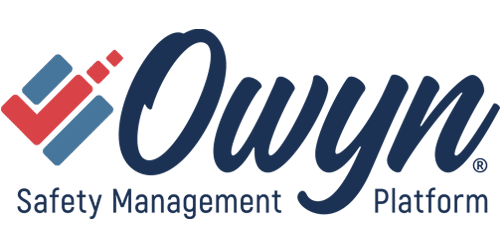Recordkeeping
Problem: Recordkeeping Requirements Are Giving You a Headache

Your Problem: OSHA recordkeeping requirements have you confused. Do the requirements apply to you? What records are you required to keep? What forms do you need to submit? When are they due? Where should you submit them? And why are you required to provide this information anyway?
Your Solution: First, determine if you need to comply with the recordkeeping requirements. Employers with more than 10 employees at any time during the year (including full-time, part-time, temporary, and seasonal workers) in high-risk industries, such as manufacturing, construction, healthcare, and retail, must maintain OSHA injury and illness records.

Unless specifically requested by OSHA or the Bureau of Labor Statistics (BLS), small businesses with fewer than 10 employees at all times during the calendar year and certain low-risk industries are exempt from recordkeeping requirements.

Be sure to count the total number of employees employed by your company, not just those employed at a particular establishment. For example, if your company employs 5 employees at one location and 7 employees at another, you will need to comply with the requirements because the total number of employees is greater than 10.
Keep in mind that all employers, including those partially exempted by reason of company size or industry classification, must report to OSHA any workplace incident that results in a fatality (within 8 hours), in-patient hospitalization, amputation, or loss of an eye (within 24 hours). See §1904.39 for more information.
To report a fatality or severe injury:

- Call the nearest OSHA office.
- Call the OSHA 24-hour hotline at 1-800-321-6742 (OSHA).
- Report online.
Be prepared to supply the following: your business name; the names of affected employees; the location, time, and a brief description of the incident; a contact person and phone number.
Make It Happen: If your business is required to comply with recordkeeping requirements, you must maintain three OSHA forms:
- OSHA Form 300 (Log of Work-Related Injuries and Illnesses): Records each incident that meets OSHA’s criteria for recordable injuries or illnesses. Fill it out within 7 calendar days of receiving notice of the incident. This log must be completed even if there are no recordable injuries for the year. In this case, the columns must show 0s at the bottom. PDF
- OSHA Form 301 (Injury and Illness Incident Report): Contains more detailed information about each incident recorded on Form 300. A workers’ compensation form or other equivalent form can be used in place of an OSHA Form 301 as long as it contains all the same information. PDF
- OSHA Form 300A (Summary of Work-Related Injuries and Illnesses): Provides a summary of the yearly incidents and must be posted in the workplace from February 1 to April 30. PDF

How serious must an injury or illness be to be recordable? Record injuries or illnesses if they result in death, loss of consciousness, days away from work, restricted work, transfer to another job, or medical treatment beyond first aid.

How does OSHA define first aid? First aid is limited to the following:
- Using a non-prescription medication at nonprescription strength
- Administering tetanus immunizations (other immunizations, such as Hepatitis B vaccine or rabies vaccine, are considered medical treatment).
- Cleaning, flushing or soaking wounds on the surface of the skin.
- Using wound coverings such as bandages, Band-Aids™, gauze pads, etc.; or using butterfly bandages or Steri-Strips™.
- Using hot or cold therapy.
- Using any non-rigid means of support, such as elastic bandages, wraps, non-rigid back belts, etc.
- Using temporary immobilization devices while transporting an accident victim (e.g., splints, slings, neck collars, back boards, etc.).
- Drilling of a fingernail or toenail to relieve pressure or draining fluid from a blister.
- Using eye patches.
- Removing foreign bodies from the eye using only irrigation or a cotton swab.
- Removing splinters or foreign material from areas other than the eye by irrigation, tweezers, cotton swabs or other simple means.
- Using finger guards.
- Using massages.
- Drinking fluids for relief of heat stress.
Many employers are required to electronically submit information from their Form 300A Summary between January 2 and March 2 each year via OSHA’s Injury Tracking Application (ITA).

YOU MUST submit 300A data if your establishment meets one of the following criteria:
- 250 or more employees and is not in an industry listed in the Exempt Industries list in Appendix A to Subpart B of OSHA’s recordkeeping regulation of 29 CFR Part 1904 or
- 20-249 employees and is in an industry listed in Appendix A to Subpart E of 29 CFR Part 1904.
YOU MUST also submit 300/301 data if your establishment(s) has 100 or more employees and is in an industry listed in Appendix B to Subpart E of 29 CFR Part 1904.

So why are you required to submit this information anyway? OSHA collects it to improve workplace safety by identifying establishments with specific hazards, allowing targeted enforcement and outreach, and by analyzing industry injury trends. Public access to this data helps employers, employees, and others make informed decisions about workplace safety, ultimately reducing occupational injuries and illnesses.
Next Steps: You’re not done yet! You have 3 more recordkeeping responsibilities:
1. Post a summary of the injuries and illnesses recorded the previous year (OSHA Form 300A) in a visible spot in your workplace from February 1 to April 30.
2. Allow employee access to review their injury and illness logs upon request. Be sure to protect confidential information about employee health when allowing access to the records.
3. Maintain records for five years and update them as needed (e.g., if any new information about a previously recorded incident comes to light).

